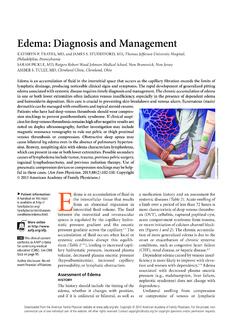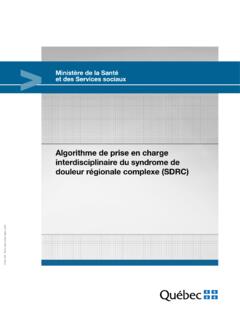Transcription of Nursing approaches in the postoperative pain management
1 S. Y ceer. postoperative pain management474J Clin Exp Invest Vol 2, No 4, December 2011 Yaz ma Adresi /Correspondence: Sevilay Y ceerGazi University Faculty of Health Science Surgical Nursing Department, Ankara, Turkey Email: Tarihi / Received: , Kabul Tarihi / Accepted: Klinik ve Deneysel Ara t rmalar Dergisi 2011, Her hakk sakl d r / All rights reservedKlinik ve Deneysel Ara t rmalar Dergisi / 2011; 2 (4): 474-478 Journal of Clinical and Experimental Investigations doi: ARTICLE / DERLEMEN ursing approaches in the postoperative pain managementAmeliyat sonras a r y netiminde hem irelik yakla mlar Sevilay Y ceerGazi University Faculty of Health Science Surgical Nursing Department, Ankara, Turkey ZETA meliyat sonras d nemde hastalar s k s k orta ve iddetli d zeyde a r deneyimlemektedir.
2 A r y netiminin hem- irelik bak m n n ayr lmaz ve nemli bir par as olmas na ra men yap lan al malar ameliyat sonras a r y neti-minin yetersiz oldu unu g sonras d nemde hem ire, a r de erlendirme-sinden, a r ile ba a kma y ntemlerinin hastaya re-tilmesinden, analjezi tedavi plan n n uygulanmas ndan, tedavi sonu lar n n izlenmesinden, hasta ve ailesinin a r y netimi konusunda e itilmesinden ve bu a amalar n ka-y t edilmesinden sorumludur. Hem irenin a r y netimin-deki b t nc l yakla m hastan n ameliyat sonras ndaki rahats zl n en aza indirmektedir. Bu makalede hem- irenin ameliyat sonras a r y netimindeki yakla mlar tart lm t kelimeler: Postoperatif a r , a r y netimi, hem- ireABSTRACTP atients frequently experience moderate to severe pain in the postoperative period.
3 Although the pain management is an integral and important part of the Nursing care, stud-ies suggest that, Nursing management of postoperative pain remains care nurses are responsible to assess the patient s pain , teach the patient strategies to deal with the pain , apply the analgesic treatment plan, monitor the re-sults of treatment, educate the patient and the family on pain management and document the pain management outcomes. The nurses holistic approach to pain manage-ment minimizes the patients discomfort caused by pain in the postoperative period after the surgery. In this article, nurses approaches to postoperative pain management are discussed. J Clin Exp Invest 2011; 2 (4): 474-478 Key words: postoperative pain , pain management , nurseEFFECTS AND MECHANISMS OF THE PAINP atients frequently experience moderate to severe pain following ,2 Despite this fact, measures to treat pain remain inadequate and large number of patients experience uncontrolled pain .
4 pain causes diminished quality of life, prolongs hospital stay, and increase morbidity and negative effect of pain on quality of life emphasizes the importance of pain relief. Interna-tional health organizations assume pain as a symp-tom of a disease, and point out its important role in determining prognosis of the disease. pain can be a symptom of a disease ( Crohn s disease, gallbladder disease); it can be a sign of disease pro-gression ( angina); or it can be a disease in itself ( complex regional pain Syndromes). The Joint Commission International (JCI)4 and American pain Society5 have suggested pain as the 5th vital sign, because mismanaged pain affects the patient s health just like any other uncontrolled vital function in the postoperative ,7 Surgical tissue damage causes pain which in turn precipitates a stress chain reaction affecting the other organ systems.
5 Uncontrolled pain may cause pulmonary complications secondary to mus-cle spasm and suppression of effective coughing, which leads to diminished vital capacity and inability to clear secretions with consequent risk of pneu-monia. Severe pain prevents early ambulation and increases the risk of venous thromboembolism due to immobility. pain also activates the sympathetic system and causes increased vascular resistance, increased myocardial oxygen consumption and car-diac overload due to catecholamine release, which in turn leads to increased blood pressure, altered cardiac output, and myocardial infarction. Cate-cholamine release results in compromised circula-tion, and consequently increases the risk of deep venous thromboses.
6 It also causes constipation and S. Y ceer. postoperative pain management475J Clin Exp Invest Vol 2, No 4, December 2011urinary retention by decreasing gastrointestinal and splanchnic blood inadequate control of pain may cause the effects mentioned above, excessive or improp-er use of the pain medications may lead to other complications by causing oversedation. Overseda-tion may affect the systemic vascular resistance and cardiac output resulting in hypotension, which in turn causes slowing of the oxygen transport to the tissues. Oversedation may cause systemic hy-potension due to decreased vascular resistance and diminished cardiac output, which by slowing the circulation give way to compromised tissue oxy-gen delivery and changes in the tissue oxygen Evidently, oversedation is a risk factor in the postoperative period.
7 Hence vital signs such as blood pressure, heart rate, breathing, besides oxim-etry, capnometry and level of consciousness must be monitored while the postoperative pain is being ,12 This argument emphasizes the impor-tance of pain control in decreasing the morbidity and mortality in the postoperative studies indicate that the great major-ity of the patients suffer from moderate to severe pain after surgery, which suggest that the health care personnel fail to control the postoperative pain ,8 Aslan and Badir,13 mention in their publication that 58% of the physicians and nurses fail to take appropriate countermeasures to prevent the postoperative pain due to their lack of knowl-edge, even though pain management clearly is an integral part of Nursing ,15 The most important distinction is that the nurse, who is the key person in pain management , is in the position to spend a lon-ger time with the This unity with the patient enables the nurse a holistic approach to the pain management in terms of being acquainted with the patient s previous pain experience and coping skills.
8 At the same time teaching the patient effective pain management methods, giving guidance, and imple-menting pain treatment plan, and documenting the outcome of the ,18 The effective postoperative pain management aims at minimizing or eliminating patient s discom-fort due to pain , facilitating rapid recovery and re-turning to full function, reducing morbidity, limiting the hospital stay, and preventing recurrence of pain related postoperative pain manage-ment includes assessment of the pain , monitoring and correction of pain related complications, patient and family education, and documentation of the process to allow further reassessment of the pain management OF THE PAINIn order to manage the postoperative pain effective-ly, the pain level must be measured appropriately.
9 The goals of pain assessment are to determine the pain severity, help choose the analgesic dosage, which is appropriate to that particular level of pain , and document the effectiveness of pain treatment. Ideally, the patient is encouraged to actively partici-pate in pain assessment, evaluation of pain regu-larly on a standard scale, and reassessment of the pain when an unexpected increase ,20 pain assessment starts at the time of admis-sion and should include an assessment of the pa-tient s activities of daily living (ADL) and pain and stress coping skills. Patient s questions should be answered in order to better plan postoperative pain control strategies. In the postoperative period, it is important to assess the cause of pain ( whether the patient s pain is related to the surgical incision, other surgical trauma or medical complications such as acute myocardial infaction).
10 Since a patient s re-sponse to pain is specific to that person, pain should be evaluated individually. The issues that the nurse must pay attention when assessing the postopera-tive pain including the following:10,20-22 Assess pain both at rest and on movement to evaluate the patient s functional status. Take into consideration patient self-report of pain and implement the proper pain scale, docu-ment the intensity, quality, location, timing & dura-tion, aggravating and alleviating factors, and prior pain treatments and their effectiveness. The effect of a given treatment is evaluated by assessing pain before and after every treatment intervention. In the surgical Post Anesthesia Care Unit (PACU) or other circumstances where pain is in-tense, evaluate, treat, and re-evaluate frequently ( every 15 min initially, then every 1-2 h as pain intensity decreases).






